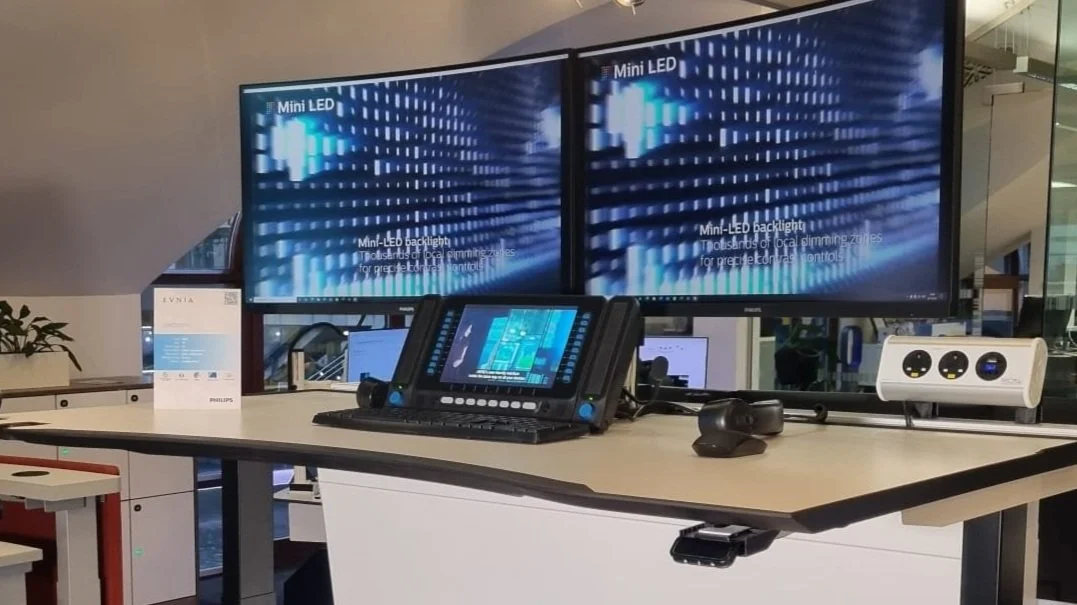A history of trading floor design
Step onto a modern trading floor, and you'll enter a world transformed by technology. Rapid innovation has revolutionised the trading floor environment from the raucous 'bear pits' of days gone by to today's sleek, tech driven spaces. In this article, we take a look at the origins of the trading floor environment and how it has evolved over time.
Ancient beginnings
Trading, in its most rudimentary form, dates back to the dawn of civilisation. In ancient Mesopotamia, traders conducted business transactions in bustling marketplaces, using basic tools like clay tablets to record transactions. However, the concept of a dedicated trading desk, as we know it today, was still centuries away.
During the Middle Ages, European merchants traded over vast distances, navigating treacherous seas and hostile territories. These intrepid traders conducted their business in a variety of settings, from market stalls to dimly lit taverns. Yet, during this era, the first inklings of a structured trading environment began to emerge.
The dawn of organised trading
The 17th and 18th centuries saw the establishment of formalised exchanges, such as the London Stock Exchange and the Amsterdam Stock Exchange. These bustling hubs of commerce provided traders with a dedicated space to buy and sell securities, laying the groundwork for the modern trading desk.
The 19th Century brought about revolutionary changes in communication technology, most notably the telegraph. This innovation enabled traders to transmit stock prices over long distances in near real-time, ushering in an era of rapid-fire trading. Ticker tape machines soon followed, providing traders with a constant stream of market data.
The golden age of wall street
The early 20th Century saw the rise of Wall Street as the epicentre of global finance. Trading floors buzzed with activity as brokers executed trades amidst a sea of shouting and gesturing. The open outcry system was introduced in the early 1900s. Traders shouted and used hand signals to buy and sell orders.
The invention of phones allowed traders to trade from different locations. Before the widespread adoption of electronic trading platforms and digital communication technologies, traders relied heavily on telephones to conduct business, communicate with clients, and execute trades.
Trader's desks were simple affairs in the early 20th Century. The only tech they needed to support was a phone and a notepad.
The computer revolution
The latter half of the 20th Century saw the advent of computers, forever altering the finance world. The trading environment underwent a radical transformation with the introduction of electronic trading platforms in the 1970s. Gone were the days of paper tickets and rotary phones; in their place stood sleek terminals and high-speed internet connections.
The digital age: Trading in the 21st century
The influence of technology has brought radical changes to the trading floor environment. It has transformed from a macho, raucous place to a calmer, more comfortable space with an increased emphasis on well-being.
Traders' desks need to host more tech, with each trader having several computers and monitors. Modern trading desks must incorporate cable management as multiple devices and accessories mean more wires.
Heat management and ergonomics
Traders often use more than one PC to process complex data, so modern trading desks are designed to hold multiple monitors and computers. They can support as many as eight screens and four PCs. The computers are contained in specially designed cabinets below the desks, which IT staff can easily access for maintenance.
When you consider how large trading floors can be, with hundreds of staff using thousands of computers, the whole environment could become unbearably hot without good heat management. Luckily, the below desk computer cabinets are designed with comprehensive heat management features that prevent PCs from overheating.
Flat screens have been a game-changer. Desks can accommodate more monitors in a tiered arrangement, giving traders access to more information and increasing productivity. Flat screens are more ergonomic, too, as users can position them for comfortable viewing. Specialised monitor arms support the multiple monitors and allow easy adjustment.
Trading desks have also evolved to provide a more comfortable and ergonomic setup for traders. Height-adjustable desktops allow you to alternate between standing and sitting, maintaining alertness and helping prevent the musculoskeletal issues that sedentary work can cause. Electronic controls let you finely adjust the height of the desk to your preference.
Evolution of communication tools
Telephone communication was a cornerstone of trading communication throughout much of the 20th Century. The cliche image of a trader with phones clamped to both ears comes to mind.
Verbal communication is still essential to trading, but rather than a phone, traders use a specialised communication device called a turret. These provide traders with a wide range of communication channels and tools essential for conducting trading activities efficiently.
Emphasis on wellbeing
It's no secret that trading is a stressful job, and workplace wellbeing has come to the fore in recent years. Investment banks are beginning to provide breakout areas for their trading floor staff. These are more informal spaces featuring comfortable, colourful furnishings. Here, trading floor staff can relax, catch up with each other, eat lunch and get away from their screens. They're also great for informal meetings.
Remote trading: Adapting to change
In the wake of the pandemic and changing work dynamics, many trading firms have embraced remote working arrangements for traders. With advanced technology, traders can now execute trades, monitor markets, and collaborate with colleagues from the comfort of their homes or remote locations.
Financial organisations have invested in communication tools and secure access to trading systems to help the transition to remote trading. These ensure that traders can stay connected and productive while working remotely.
Today's trading floors are undergoing a profound transformation, driven by technological advancements and the rise of AI-powered algorithms. The evolution of trading environments is all about innovation and adaptation.
Looking to upgrade your trading floor? At Technology Desking we stock a range of solutions tailored to your unique requirements. Take a look at our products here










